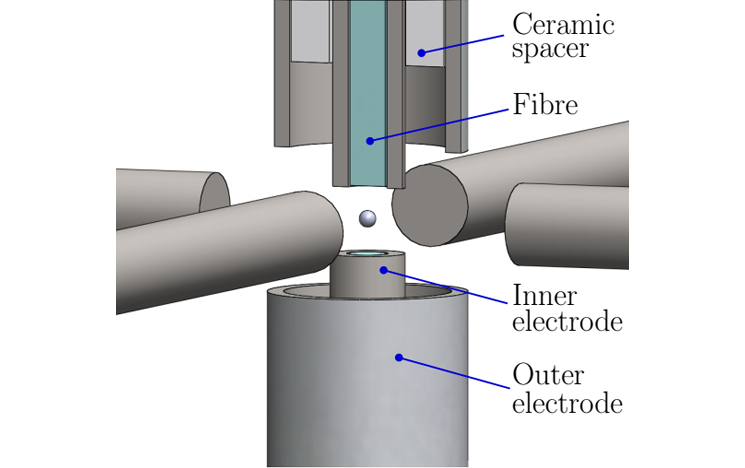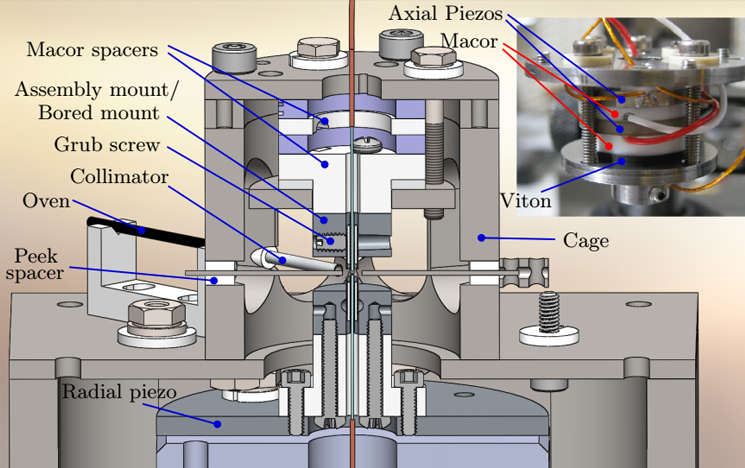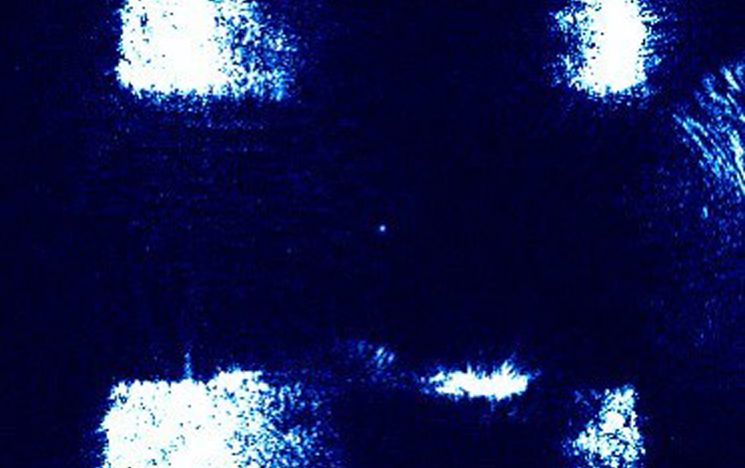Fibre cavity ion trap
A reliable atom-photon interface is necessary to interlink remote quantum processors in order to create a large quantum network. The most promising technology for such an interface are optical cavities. Utilizing optical cavities, the emission of atomic particles can be directed into the cavity modes and the photons’ polarisation as well as temporal shape can be controlled. To this end, a novel endcap trap has been developed to couple single ions to a microresonator as small as 350 µm in length. To do so, the facets of optical fibres have been laser machined to produce small cavities compatible with ion traps (see our Technology Development page). To accommodate them, tubular trapping electrodes are used.

Trap electrode structure with integrated fibre cavity

Schematic of the entire ion trap structure
The inner electrodes are grounded whilst the outer electrodes carry the radiofrequency signal that traps the ion. The fibres are recessed within the inner electrodes. The trapping electrodes are then integrated into an infra structure to stabilise the cavity length and to displace the ion for optimising its position within the tap. In this manner, the trapping potential is shielded from the detrimental effect of the dielectric fibre cavities. Single ions have been trapped and coupled to the cavity.

Single trapped ion in our fibre cavity ion trap
We use the system to investigate various schemes to entangle photons and ions and to teleport quantum stated between two ion traps.